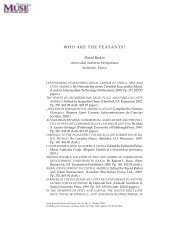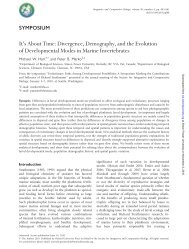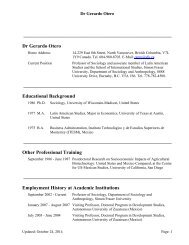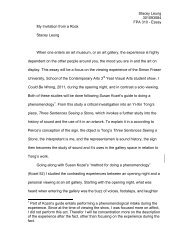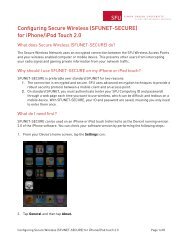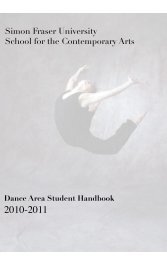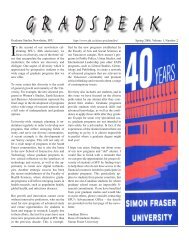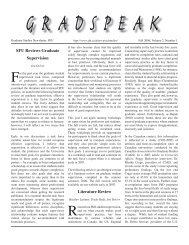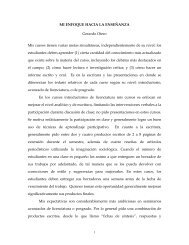Lexicon-Based Methods for Sentiment Analysis - Simon Fraser ...
Lexicon-Based Methods for Sentiment Analysis - Simon Fraser ...
Lexicon-Based Methods for Sentiment Analysis - Simon Fraser ...
You also want an ePaper? Increase the reach of your titles
YUMPU automatically turns print PDFs into web optimized ePapers that Google loves.
Computational Linguistics Volume 37, Number 2<br />
Table 2<br />
Examples from the adverb dictionary.<br />
Word SO Value<br />
excruciatingly −5<br />
inexcusably −3<br />
foolishly −2<br />
satisfactorily 1<br />
purposefully 2<br />
hilariously 4<br />
It is difficult to measure the coverage of our dictionaries, because there is no<br />
direct way to estimate the number of SO-carrying words and expressions in English<br />
(although it should probably be larger than 5,000, the rough total of our current<br />
dictionaries). Wilson, Wiebe, and Hoffmann (2005) provide a list of subjectivity cues<br />
with over 8,000 entries; there are many more neutral, repeated, and inflectionally<br />
related entries than in our dictionaries, however, as well as many more nouns, and<br />
far fewer adjectives. Automatically generated dictionaries are generally much larger:<br />
SentiWordNet (Baccianella, Esuli, and Sebastiani 2010) includes 38,182 non-neutral<br />
words (when the polarity of senses is averaged—see discussion in Section 3.4), and<br />
the Maryland dictionary (Mohammad, Dorr, and Dunne 2009) has 76,775 words and<br />
phrases tagged <strong>for</strong> polarity. We will see, in Section 3.4, that larger dictionaries are not<br />
necessarily better, in some cases because the in<strong>for</strong>mation contained is not as detailed<br />
(the Maryland dictionary is not classified by part of speech), or because, in general,<br />
including more words may also lead to including more noise.<br />
Independently of the difference between manually and automatically generated<br />
dictionaries, we have evidence that coverage is a double-edged sword: With an earlier<br />
version of SO-CAL we extracted 50 texts from the Polarity Dataset (texts from which<br />
we had not previously drawn words) and extracted all words judged to have sentiment<br />
that were not already in our dictionaries. We found 116 adjectives, 62 nouns, 43 verbs,<br />
and 7 adverbs, a small fraction (less than 3%) of the words in our present lexicon.<br />
When these words were added, we found that per<strong>for</strong>mance in that data set actually<br />
dropped (by 4%). We believe this effect is related to the large amounts of description<br />
in genres such as movie reviews (see Taboada, Brooke, and Stede [2009] <strong>for</strong> a way<br />
to address the problem of descriptive noise); basically, rarer vocabulary is likely to<br />
contain a strong descriptive (semantic) component, and thus be used in a way that<br />
is tangential to overall text sentiment. In any case, the best argument <strong>for</strong> good (and<br />
appropriate) coverage is acceptable per<strong>for</strong>mance <strong>for</strong> new texts in new domains, and<br />
indeed we will see in Sections 2.8 and 2.9 that there is little difference in per<strong>for</strong>mance<br />
between texts and domains which were used to build our dictionaries, and others which<br />
were not.<br />
2.3 Intensification<br />
Quirk et al. (1985) classify intensifiers into two major categories, depending on their<br />
polarity: Amplifiers (e.g., very) increase the semantic intensity of a neighboring lexical<br />
item, whereas downtoners (e.g., slightly) decrease it. Some researchers in sentiment<br />
analysis (Kennedy and Inkpen 2006; Polanyi and Zaenen 2006) have implemented<br />
274


